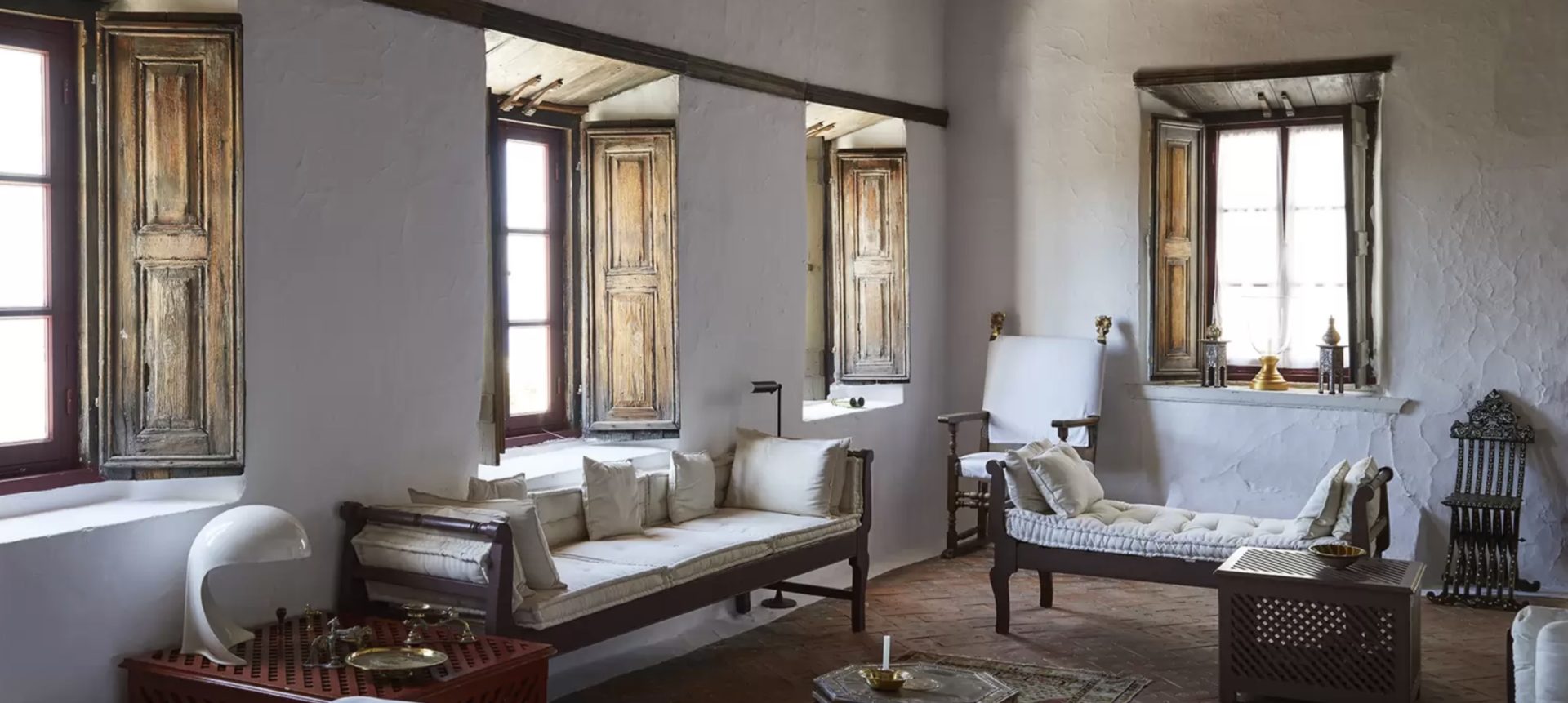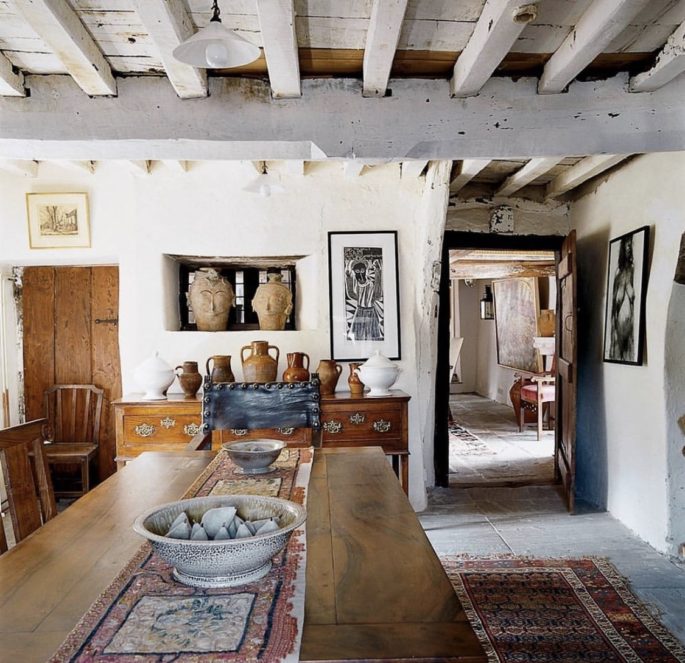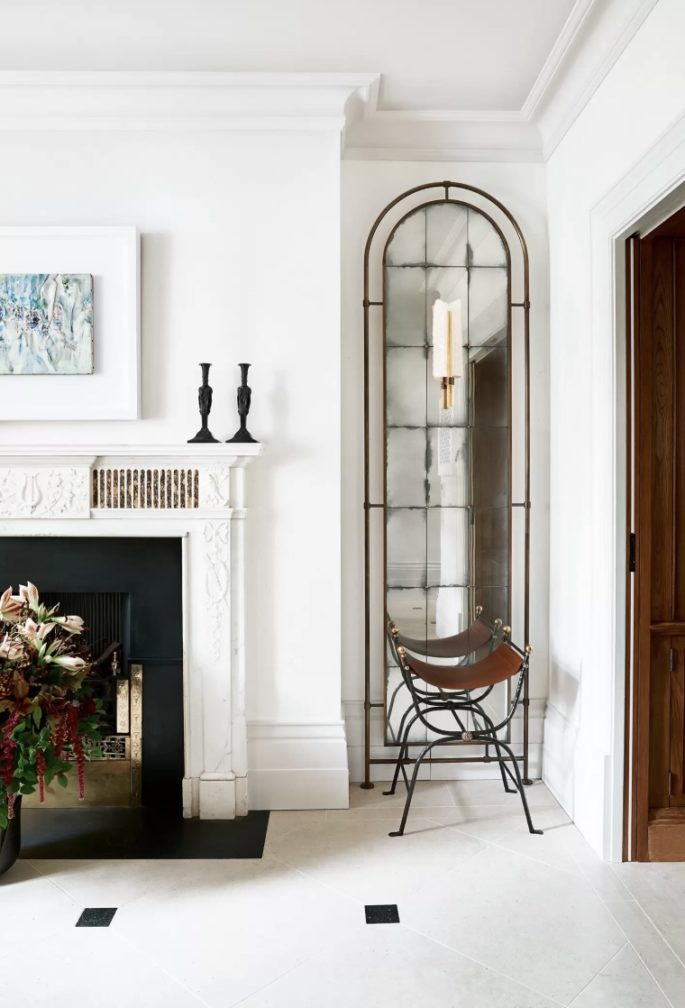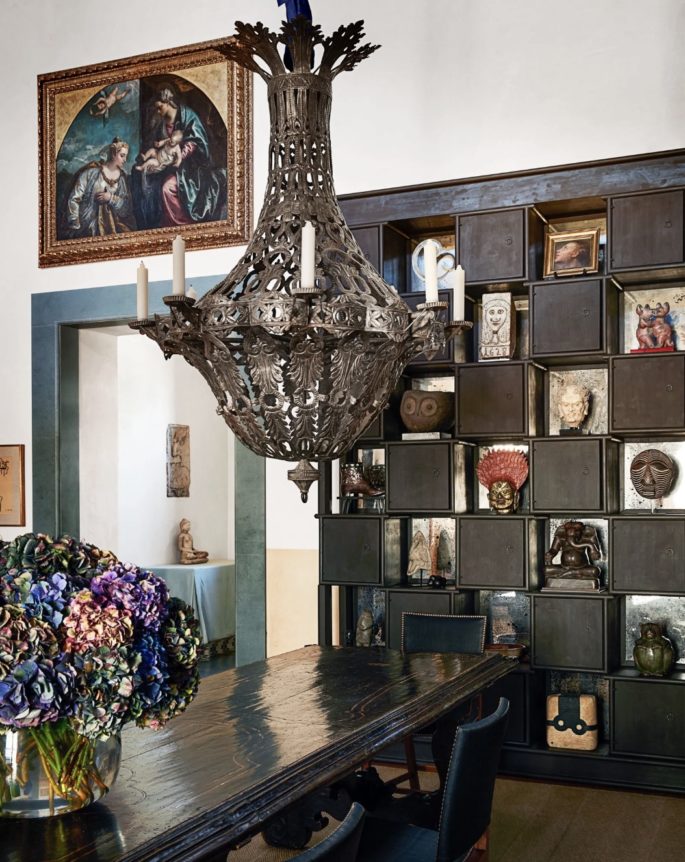RIP sweet pinks and brass fixtures. Make way for the new IT building material: cork. Hello, simple luxuries, and shifting into a slightly more subdued gear for the new year while still packing on the personality. A great example is John Stefanidis’ house, pictured, on the Greek Island of Patmos, published from ‘Near and Far’, Lisa Fine’s new book, which shows engaging interiors that are much like the owner’s personalities – a huge trend.
We checked in with some of our favourite designers for Part 2 of our predictions on what’s trending and ending in 2020. Here’s the consensus.
Frugality Has It’s Groove Back
It’s a good thing frugality is in vogue. Saving and living affordably by using what you have, and sourcing second-hand items is IN. But there’s a very thin line between being frugal and cheap—and that line moves with the zeitgeist. Part of it is people making a virtue of necessity and it’s become socially acceptable behaviour to be thrifty, simplify and make a shift towards more conscious consumption as we reevaluate our impact.
Simple Luxuries
Call it a response to the societal chaos that 2019 wrought, but in 2020, the idea of home-as-sanctuary will be stronger than ever. That translates as a kind of calm, pared-back, warm aesthetic that is “lived-in yet refined.”
As recently reported, we will move away from a culture of extreme polarities toward embracing a more harmonious outlook. People are feeling a greater need to be connected to nature and we will see elements of the ‘great outdoors’ infusing interior design. It’s all about materials with sustainability in mind—natural wood, recycled textiles, undyed yarns, and plush soft fabrics, along with warm terracotta earthenware.
Provenance
The stories behind products matter as much as aesthetics. Buying sustainability isn’t just about the materials involved in the making process – the people behind products are crucial. A few years ago we might not have considered who made the things in our homes or whether they were made by ethical means. But as consumers in the face of current environmental issues, our hunger for provenance has spread to interiors, homewares and furniture and the stories behind our purchases now matter as much as their aesthetic or functional qualities. It’s a stance that’s set to strengthen, too, as a number of remarkable organisations and brands are embarking on collaborations with artisans across the world, empowering communities and safeguarding heritage crafts for good. The primary way of achieving this is by applying modern sensibilities to traditional production techniques. The concept of supporting collectives through craft is not just reserved for boutique luxury companies – leading the way for high street retailers is Ikea with the ‘Hantverk’ collection created in collaboration with social enterprises in India, Thailand, Jordan and Romania.
Even at its most considered and sustainable, consumerism can’t solve all our problems. But if this social purposed driven approach was the future, we’d surely live in a more balanced world.
Silence
A growing awareness of the negative impact of excessive noise levels on everything from hearing to mental health is attracting the attention of homeowners and brands. Consumption society has produced so much noise that it even transformed silence into a commodity. Silence is becoming a luxury feature because of the technology that enables it, but also because of all the wellbeing culture that it provides.
Materiality
Mushrooms. Tumeric. Corn Husks. No, not a vegan meal, but a few of the raw ingredients designers are harvesting to form surfaces, textiles, objects and furniture. In the wake of the climate crisis, the interiors industry is making waves with its pioneering use of sustainable waste materials and eco-chic creations – and reframing our relationship with nature. No stone is left unturned in this quest to explore the possibilities of the botanical world – even algae is under the microscope. Some designers are simply turning to age-old methods that are gentler on the planet.
Organic dyes go back several millennia but are becoming increasingly popular in the production of home textiles.
Amped-Up Neutrals
Following several years dominated by exuberant colours, we anticipate that 2020 will bring a more subdued approach. We see a transition into gorgeous warm neutrals that cleanse the palate and hint at the re-emergence of tradition. Neutrals that are often relegated to the background—off-whites, earthy ochres, soft honeys, and tactile beiges to heat up the coolest of interiors—will instead step to the foreground, continuing that reconnection with nature and authenticity.
Japanese Influences
Given the trend toward simpler living, it’s no surprise that the Japanese aesthetic will be a strong presence in 2020. These looks are always present in some way, but periodically, they are energised as a trend,” says Michelle Lamb, editorial director at The Trend Curve. “Natural materials, used in simple forms, reinforce a feeling of purity that is at the core of this style.”
Beyond the rattan and cane that’s already made a comeback, the wood-charring technique Shou Sugi Ban as a compelling texture for furniture and decor that speaks to eco sensibilities. Also expect to see angular furnishings and patterns that allude to origami folds as part of the trend’s influence, along with “kimonos or obi bands expressed in modern ways or inspiring shape, pattern, detail.
Irregular Forms
Furniture and lighting will reflect a natural, irregular touch. Look for organic structures in chairs, tables and lighting in metal or wood. For example, lamp bases will increasingly feature tinted glass in handblown styles allowing imperfect shapes and organic materials like rope, raffia, twine, and string are important because they bring a natural vibe into any interior space.”
Grand Millennials
A new wave of design-savvy, nostalgic-natured, and traditionalist-inspired influencers are on the rise, recently dubbed “grand millennials” by House Beautiful. This new “Grand-millennial” aesthetic is a fresh take on the classic, layered design style. Pleated lampshades, ruffled linens, needlepoint pillows, blue and chintz-everything are a few of the items young traditionalists are gravitating towards. Consumers are now accessorizing their sofa like they would an outfit and are having more fun with design.
These millennials have an appreciation for good design and are implementing fun, colorful and playful spins on the tried and true traditional design.
The New Building Material: Cork
With sustainability top of the agenda, it’s no coincidence that architects and designers are looking to improve the construction industry’s carbon footprint. Imagine a material that’s chemical free, naturally fire retardant, fully recyclable, water resistant, sound absorbing, thermally efficient, and has antimicrobial properties to boot. Cork has been right under our noses for centuries. Humans have long known about the versatile qualities but its only recently research into bio-materials has increased that architects have rediscovered the construction potential of this plant-based medium.
Sea Change
From moody blues to greener pastures, this palette of richly saturated shades – including the Pantone Colour of the Year, Classic Blue , which offers an ocean of possibilities.
French blue is officially the new millennial pink and the new neutral.
Art Déco Redux
This year, won’t just be about earthy tones and natural materials. For 100 years, Art Deco has embodied glamour, exuberance and the promise of the new. A perfect paradox, it makes history look modern. There’s something about symmetry and geometry that gives us structure and provides a calmness to the home. But the influence in 2020 will be less ornate and detailed going into the new decade and look more organic in shape and ‘handmade,’ especially in accessories. We’re predicting an updated take on the angular geometrics, cutouts, and patterns of Art Deco—we’re dubbing it “neo-Deco”—for fresh, sophisticated interiors, combining soft colours alongside the more traditional black and gold.
One Colour Prints
Nearly all the most exciting wallpaper and fabrics collections right now are showing chromatic restraint. We are seeing more reassuring colours such as chocolates, tan, pale blues or pistachio with patterns expressed in a single colour against white rather than in the mashup of hues associated with maximalism. The reason?
One colour prints are easy to use, and youthful.
Trompe L’Oeil
Trompe l’oeil is an art technique that uses realistic imagery to create the optical illusion that the depicted objects exist in three dimensions. Forced perspective is a comparable illusion in architecture. As we move away from traditional modernism, there’s been a continuing return of figurativism in visual arts, and with it, we’re also moving into more organic forms in furniture. Classical ornamentalism is having a very good moment, and I think this will become more mainstream in 2020. It borrows from neoclassical ornamentalism and has most recently manifested through the guise of postmodern design, which we’ve seen in the furniture of Robert Venturi, Garry Knox Bennett, and Piero Fornasetti, among others. It’s been most recently represented in the collective works of several contemporary furniture designers and in the visual arts. I think we can expect to see a lot more of this come forward in ceramics, furniture design, and textiles.
Ceramic Furniture
Ceramics are having a big moment and we are beginning to see new forms appear, not just in accessories and lighting, but in seating, tables, and more. Designers are showing us there is no limit to what you can create with ceramics. Keep an eye out for handmade pieces which are a great way to incorporate a conversation piece into a space with a unique story of how it came to be.
Statement Doorknobs and Pulls
Replacing doorknobs and cabinet hardware is one of the easiest home upgrades you can make—and it’s totally rental-friendly. We predict 2020 is the year those everyday necessities will finally steal the spotlight with status doorknobs replacing subtle fixtures. It’s an easy update for any space.






